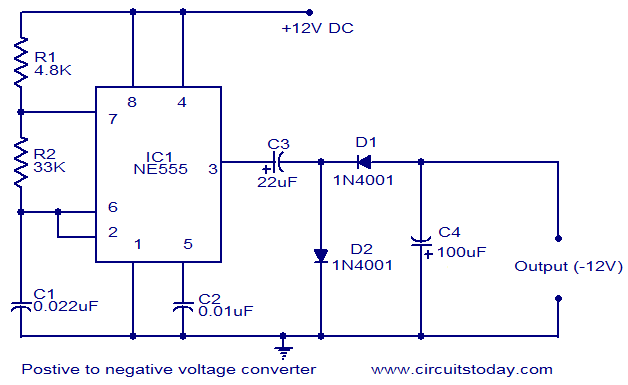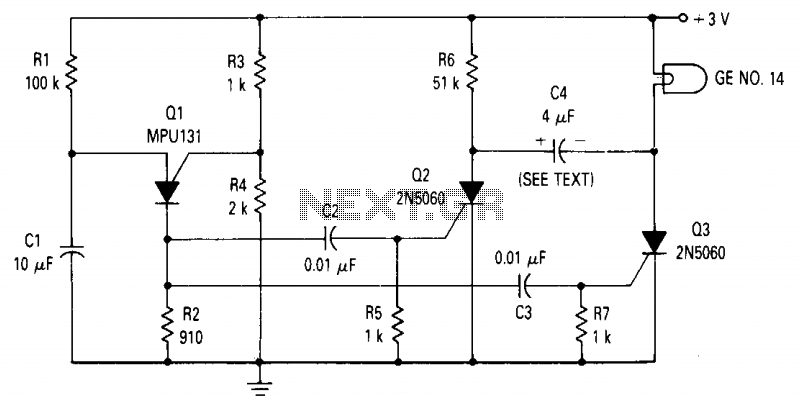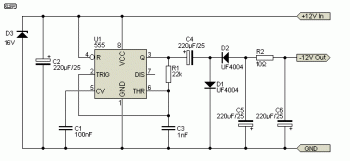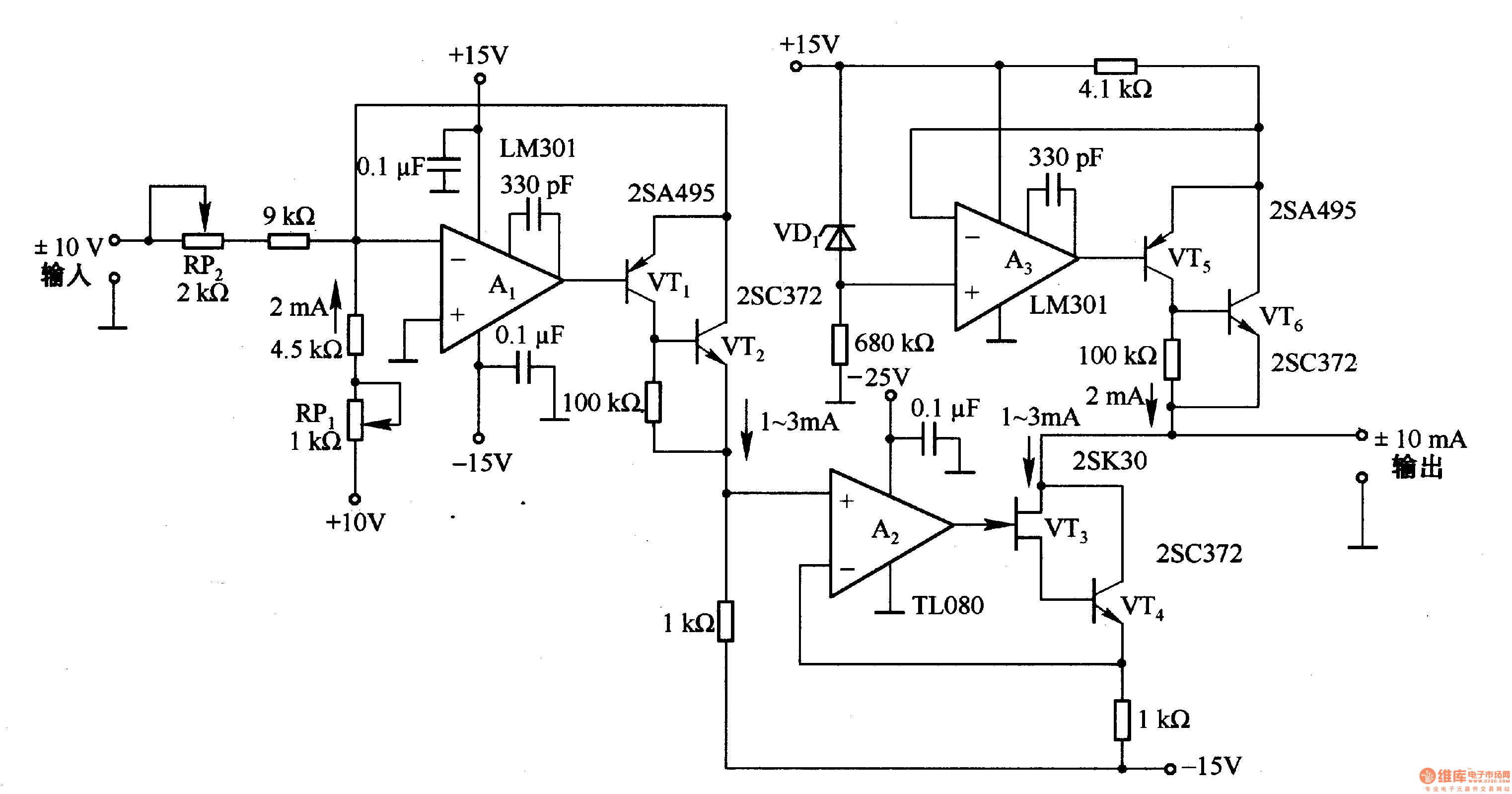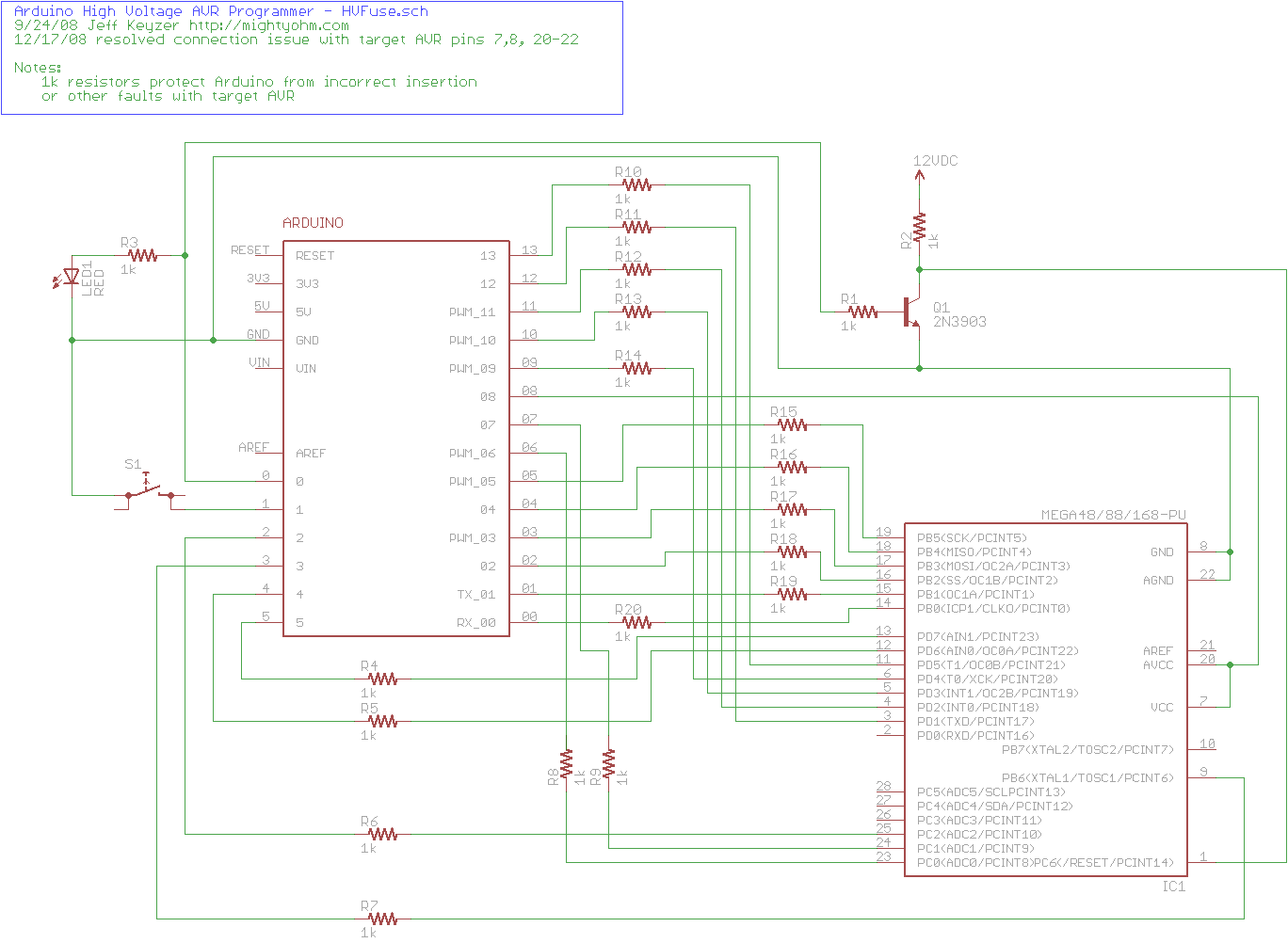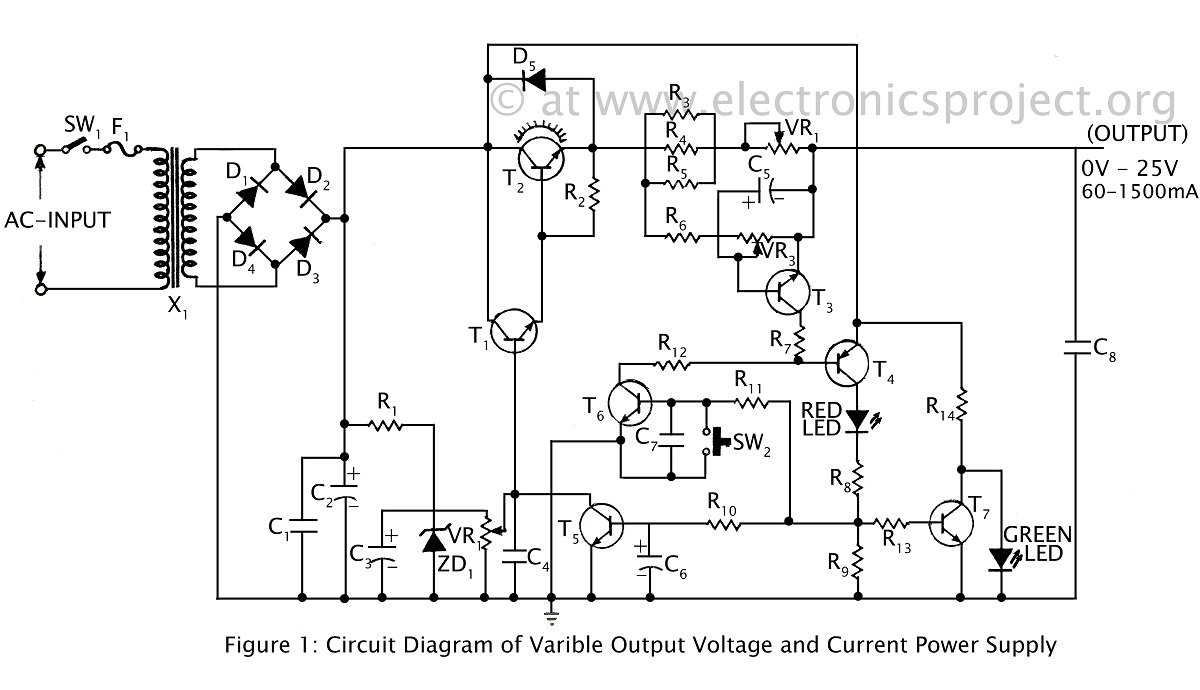
Voltage Controlled Panner
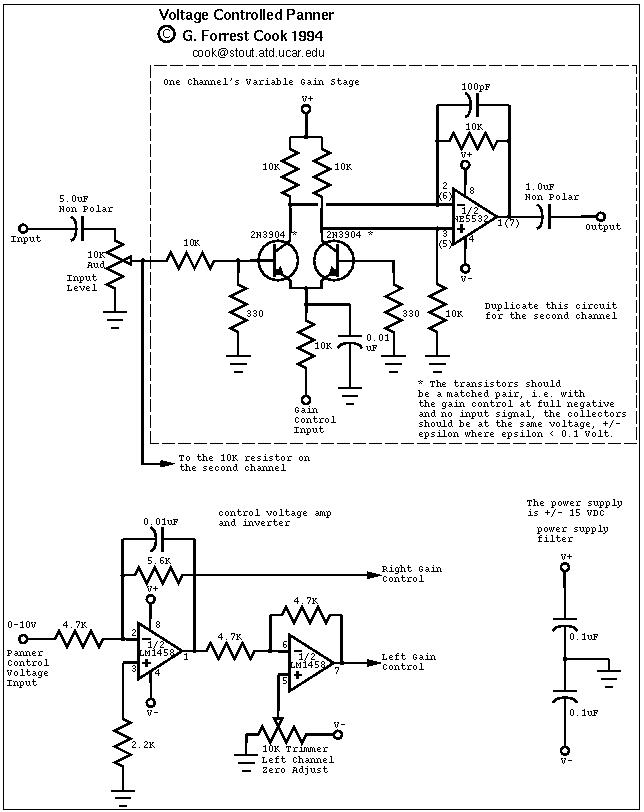
This circuit is used to convert a mono audio signal into a stereo signal that can be panned between the left and right channel by a 0-10V control signal, it is intended for analog synthesizer systems. The circuit is mainly here for historical reasons, a higher quality panner may be built with the National Semiconductor LM13700 dual transconductance amplifier set up as a pair of voltage controlled amplifiers. The control voltage is fed into the first half of a 1458 op-amp, this stage inverts the signal and sets the offset and gain for the right channel gain control circuit. This signal is then fed into the second half of the 1458 op-amp which inverts the v
The circuit described functions as a mono-to-stereo converter, allowing for the manipulation of audio signals in synthesizer applications. The primary component utilized is the dual operational amplifier, the LM1458, which consists of two op-amps in a single package. The design leverages the first op-amp to process the control voltage input, which ranges from 0 to 10V. This control voltage determines the panning of the audio signal between the left and right channels.
In the first stage, the control voltage is applied to the inverting input of the first op-amp. The op-amp configuration is set to invert the signal, effectively creating a phase shift that is necessary for controlling the gain of the right channel. The gain and offset adjustments are critical in ensuring that the audio signal maintains fidelity while being manipulated. The output of this stage is then directed to the second op-amp within the same package.
The second op-amp operates similarly, receiving the inverted signal from the first op-amp. This stage further processes the audio signal, ensuring that it is correctly balanced and panned according to the control voltage input. The output from this second op-amp can then be connected to the right channel of an audio output, while the original mono signal can be sent directly to the left channel.
To enhance the quality of the audio panning, a higher fidelity alternative can be implemented using the LM13700 dual transconductance amplifier. This component can be configured as a pair of voltage-controlled amplifiers (VCAs), offering improved performance characteristics, such as lower distortion and better dynamic range. The use of VCAs allows for more precise control over the audio signal, making it suitable for professional audio applications.
In summary, this circuit serves as a foundational design for converting mono audio signals to stereo, with the potential for upgrades to more sophisticated components to achieve higher audio quality. Its application in analog synthesizers highlights its relevance in both historical and modern electronic music production.This circuit is used to convert a mono audio signal into a stereo signal that can be panned between the left and right channel by a 0-10V control signal, it is intended for analog synthesizer systems. The circuit is mainly here for historical reasons, a higher quality panner may be built with the National Semiconductor LM13700 dual transconductance amplifier set up as a pair of voltage controlled amplifiers.
The control voltage is fed into the first half of a 1458 op-amp, this stage inverts the signal and sets the offset and gain for the right channel gain control circuit. This signal is then fed into the second half of the 1458 op-amp which inverts the v 🔗 External reference
The circuit described functions as a mono-to-stereo converter, allowing for the manipulation of audio signals in synthesizer applications. The primary component utilized is the dual operational amplifier, the LM1458, which consists of two op-amps in a single package. The design leverages the first op-amp to process the control voltage input, which ranges from 0 to 10V. This control voltage determines the panning of the audio signal between the left and right channels.
In the first stage, the control voltage is applied to the inverting input of the first op-amp. The op-amp configuration is set to invert the signal, effectively creating a phase shift that is necessary for controlling the gain of the right channel. The gain and offset adjustments are critical in ensuring that the audio signal maintains fidelity while being manipulated. The output of this stage is then directed to the second op-amp within the same package.
The second op-amp operates similarly, receiving the inverted signal from the first op-amp. This stage further processes the audio signal, ensuring that it is correctly balanced and panned according to the control voltage input. The output from this second op-amp can then be connected to the right channel of an audio output, while the original mono signal can be sent directly to the left channel.
To enhance the quality of the audio panning, a higher fidelity alternative can be implemented using the LM13700 dual transconductance amplifier. This component can be configured as a pair of voltage-controlled amplifiers (VCAs), offering improved performance characteristics, such as lower distortion and better dynamic range. The use of VCAs allows for more precise control over the audio signal, making it suitable for professional audio applications.
In summary, this circuit serves as a foundational design for converting mono audio signals to stereo, with the potential for upgrades to more sophisticated components to achieve higher audio quality. Its application in analog synthesizers highlights its relevance in both historical and modern electronic music production.This circuit is used to convert a mono audio signal into a stereo signal that can be panned between the left and right channel by a 0-10V control signal, it is intended for analog synthesizer systems. The circuit is mainly here for historical reasons, a higher quality panner may be built with the National Semiconductor LM13700 dual transconductance amplifier set up as a pair of voltage controlled amplifiers.
The control voltage is fed into the first half of a 1458 op-amp, this stage inverts the signal and sets the offset and gain for the right channel gain control circuit. This signal is then fed into the second half of the 1458 op-amp which inverts the v 🔗 External reference
